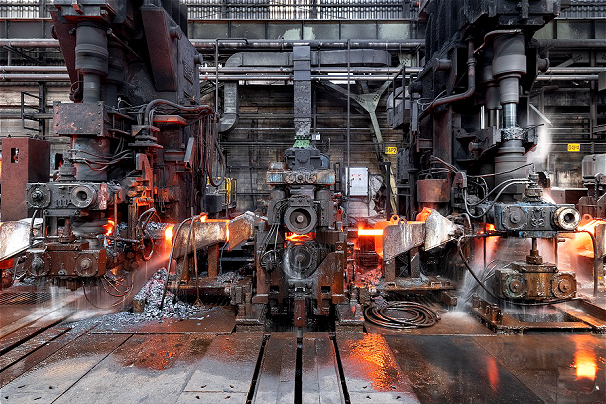
The section rolling mill is a machine used to process metal materials. It is composed of multiple components, including frames, rollers, transmission systems, lubrication systems and control systems, and the roll is cut into multiple holes of different specifications according to the requirements of product use and specifications. These components cooperate with each other to complete the rolling processing of metal materials and realize the production of metal materials of different shapes and sizes.



The roller is one of the most important components of the section rolling mill. It consists of multiple rollers, each of which has its own role. During the rolling process, the rollers interact to complete the processing and shaping of the metal material. Rollers are usually made of cast iron or steel and have high strength and wear resistance.
The transmission is another important component that is responsible for transmitting the power generated by the motor to the rollers for operation. The transmission device usually consists of reducer, coupling and gear box.
The electrical system is the control center of the section rolling mill. It is responsible for controlling the starting, stopping, speed adjustment and other functions of the rolling mill. Electrical systems usually consist of switches, buttons, wiring boards, and controllers.
The lubrication system is one of the essential components of the section rolling mill. It can ensure that the rollers do not generate excessive heat and loss due to friction during operation. Lubrication systems usually consist of oil pumps, oil pipes and oil tanks.
The section rolling mill also includes some auxiliary components, such as bases, safety shield, sensors, etc. The base is the support structure of the mill, it can ensure that the rolling mill will not shake and tilt during operation; the safety shields can protect the safety of workers and prevent them from being involved in the rollers; the sensor can monitor the operating status of the rolling mill and provide timely alarms to avoid malfunctions.
The rolling process of the mill can refine the grains of steel and eliminate defects in the microstructure, thereby making the steel structure dense and improving its mechanical properties. Bubbles, cracks and looseness formed during pouring can also be welded under high temperature and pressure.
Customized design according to the actual needs of customers.
The deformation of the rolled piece is relatively uniform, and the speed difference of each part on the cross-section is small; the internal stress of the rolled piece is small; large-sized steel can be rolled with small-diameter rolls; the adjustment of the rolling mill is simple, the product efficiency is high, and the roll consumption is low.
Our section rolling mill adopts cast steel structure, open frame, and AC/DC motor drive. It has the advantages of high product efficiency, stable quality, reasonable structure, convenient maintenance, and reliable use.




After the steel billet is rolled through multiple passes such as pre-rolling, rough rolling, intermediate rolling, and finishing rolling, it is formed into profiles of various specifications and cross-sectional shapes. During the rolling process, the steel billet undergoes multiple compression and tensile deformations. Under extreme conditions such as high temperature, high pressure, and high speed, through metal plastic deformation, the arrangement of steel particles is changed, causing changes in physical properties and chemical composition, and finally forming profiles that meet standard specifications.


| Type |
Roll DIA |
Roll working length |
Main motor Power |
Rotating speed |
| FF300×4 | Φ280-Φ330 | 700 | 630 | 590 |
| FF250×6 | Φ230-Φ280 | 500 | 800 | 590 |
| FF250×2 | Φ230-Φ380 | 500 | 240 | 738 |
| FF220×2 | Φ200-Φ240 | 350 | 185 | 738 |
*The output will vary according to different materials, feed particle size and other factors
Save Time! Get A Detailed Quotation Quickly.
